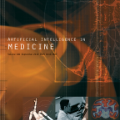The aim of this paper is to develop hybrid non-orthogonal multiple access (NOMA) assisted downlink transmission. First, for the single-input single-output (SISO) scenario, i.e., each node is equipped with a single antenna, a novel hybrid NOMA scheme is introduced, where NOMA is implemented as an add-on of a legacy time division multiple access (TDMA) network. Because of the simplicity of the SISO scenario, analytical results can be developed to reveal important properties of downlink hybrid NOMA. For example, in the case that the users' channel gains are ordered and the durations of their time slots are the same, downlink hybrid NOMA is shown to always outperform TDMA, which is different from the existing conclusion for uplink hybrid NOMA. Second, the proposed downlink SISO hybrid NOMA scheme is extended to the multiple-input single-output (MISO) scenario, i.e., the base station has multiple antennas. For the MISO scenario, near-field communication is considered to illustrate how NOMA can be used as an add-on in legacy networks based on space division multiple access and TDMA. Simulation results verify the developed analytical results and demonstrate the superior performance of downlink hybrid NOMA compared to conventional orthogonal multiple access.
翻译:暂无翻译



